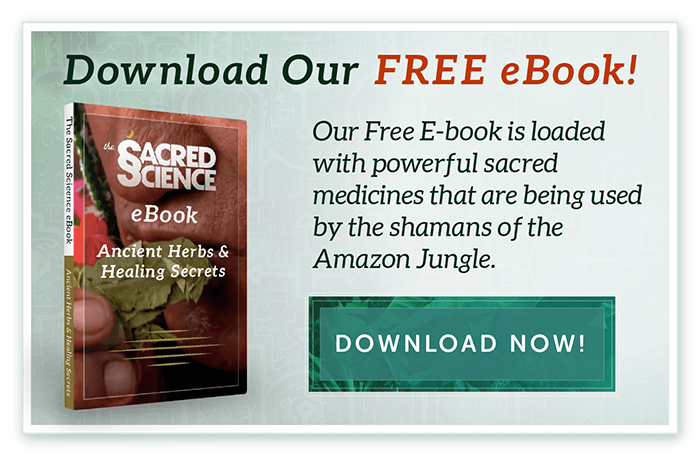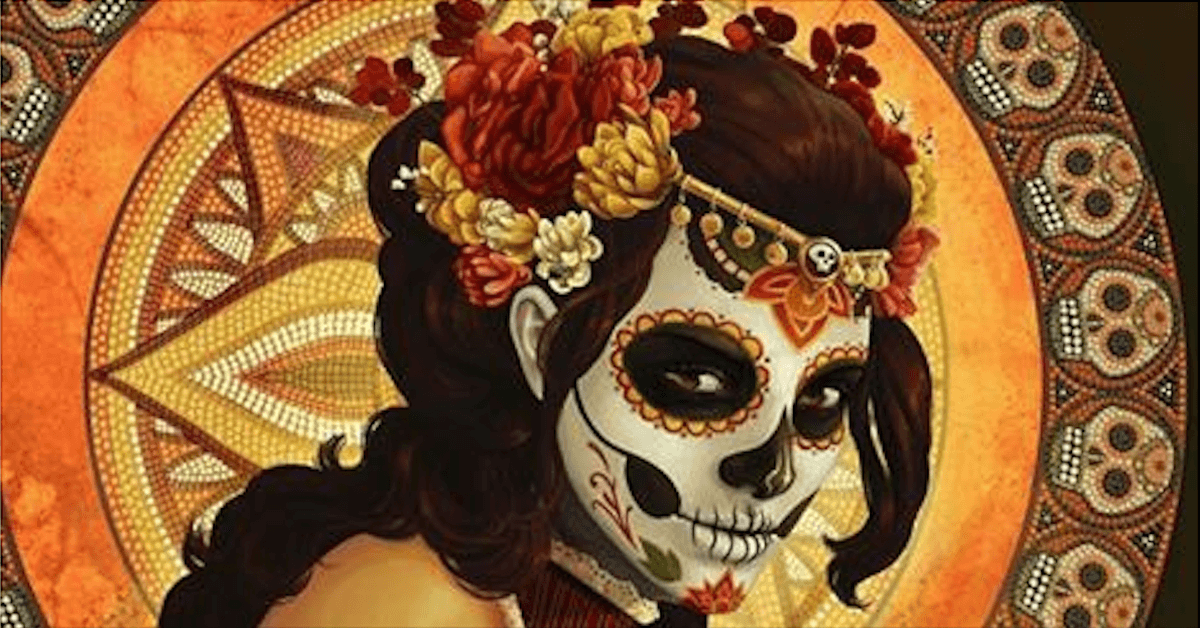As we gear up for Halloween here in the US, a different holiday will be celebrated on November 2nd in Mexico. I’m talking about Dia de los Muertos, or the Day of the Dead, and if you’ve never heard of it, this tradition is truly something to behold. Because of their proximity to one another on the calendar and mutually “macabre” costumery, many associate the Day of the Dead with Halloween, but this is far from accurate.
The American adaptation of Halloween instills fear around death and evil, while Dia de los Muertos is a celebration of the deceased and an honoring of change. This ancient autumn festival has become an internationally acknowledged phenomenon, known for its remarkable masks, enchanting decorations, and the sheer magnitude of the turnout. Every year, the holiday effectively shuts down Mexico City, the largest city in the western hemisphere. But there is more to this custom than face paint, street dancing, and ceramic skulls laden with technicolored flowers.
The Day of the Dead is actually an indigenous tradition more than 3000 years old, stemming from an Aztec celebration of the goddess Mictecacihuatl, whose role was to watch over the bones of the dead. Though it might sound grim, the sentiment of the festival, then and now, is one of respect and revelry – a time to come together as a community and honor our ancestors. I wish we had something like this in the States, but for now we can visit other cultures and partake in their time-honored customs!
On to the medicine:
During this timeless two day festival, the masses return to local cemeteries to honor the graves of their deceased loved ones with prayers and ofrendas, or offerings. In homes, churches, and out in the streets, locals make ofrendas that contain candles, incense, and items that once belonged to lost loved ones. The individual components of each altar vary, but there is one ceremonial “must” that participants usually make sure to include – the beloved marigold.
For millennia, the marigold has been used by the tribes of the New World for its power to heal. The legendary flower is featured in many Mesoamerican myths – an attribute that any ethnobotanist is looking for when searching for good plant specimens to study. On the Day of the Dead, it is believed that the sweet fragrance of this other worldly flower are enough to wake the spirits of the deceased, and draw them back into the land of the living to join in the festivities.
But beyond ceremonial uses, why did the Aztec and neighboring civilizations to the north and south hold this plant in such high regard?
Simple. The early native people of the Americas saw that the marigold was not only beautiful, but also an excellent medicine – particularly for the skin.
Extracts from the flower were used to beautify the skin, and as a first aid to treat burns, scrapes, and skin infections. The most common treatment methods were herbal baths, a poultice made of the flowers, or applying squeezed juice from the plant onto the affected area. For quick relief from a minor insect bite or sting, you can simply rub the head of a marigold directly on the irritated area.
A tea from the flower was also prepared for digestive problems including dysentery, upset stomach, gas, colic, and parasites.
It is worth noting that certain species of marigold (in the Calendula genus) are currently being studied for their anti-cancer properties.

How To Make Your Own Marigold Skin Salve
(Makes about 3 cups)
To make this recipe, you will need either a slow cooker or double boiler, which you can fashion yourself with a metal mixing bowl and slightly smaller pot filled with a bit of water.
INGREDIENTS:
2 cups olive oil
1/3 cup chopped marigold flowers
1 liter water
2/3 cup beeswax
INSTRUCTIONS:
• Place the first three ingredients in your double boiler. Simmer for 4 hours, stirring from time to time.
• Remove from heat, and allow to cool enough to handle. Strain through a fine-mesh sieve, pressing the marigold flowers
with the back of a spoon to extract all
the oils. Discard the marigold.
• Chill for 24 to 48 hours, until the water and oil separate. Skim off the water, and discard.
• Place the oil in a heavy saucepan and simmer over low heat. Do not allow to come to a boil.
• Add the beeswax, stirring until dissolved.
• Pour into storage containers with lids.
Enjoy! The marigold is a great example of the many medical mysteries that live in the heart of the world’s greatest traditions. I can’t wait to share the herbal underpinnings of Christmas in a few months!
Stay curious,
Nick Polizzi
Director, The Sacred Science



24 Responses
LOVE Sacred Science, thanks of everything you post! This is my favourite time of year, particularly for what it represents in nature.
But actually, the origins of Halloween are very similar to that of Mexico, commercialism has it wrong 🙂
It was originally a Pagan holiday called Samhain! Summer’s end. The observance of change, when the old year has passed, the harvest has been gathered, animals brought in from the fields, and the leaves have fallen from the trees. The earth slowly begins to die around us & the veil between this world and the next is at its thinnest, allowing the spirits of the dead to travel again among the living!! A time of connecting with & honouring our ancestors. Sanhaim feasts lasting 3 days are still popular with alters paying homage and respect is paid to our ancestors!
When the Catholics were trying to turn the Pagans to Christ, they targeted the traditional Pagan celebrations and rather then try to stop them, they made a Christian holiday at the same time, in the hope it would become a church holiday.
So they declared 1st November All Hallow’s Day (All Saints Day, for honouring those that didn’t have their own day). So the night before became All Hallows’ Eve, then Hallowe’en, and eventually, simply Halloween, pretty much now a combination of a few different traditions!
It’s seen as the perfect time for us to wrap up the old, deal with anything unresolved from the last year, clear out our unfinished ‘stuff’ and make way for the new! 🙂
Thanks, Donna! I was just about to clarify the same info when I read your post! Good job, very descriptive. The only thing I will add is the fact that “Halloween”, as Americans now know it, has really just become a marketing frenzy…no spirituality whatsoever. So sad…
Pretty much the same egoistic format for all the “Christian” festivals.
Love it both descriptions of Día de los muertos and All hollow’s eve. Thank you
Halloween is a Northern European pagan tradition that instills fear around death,
The above statement is highly inaccurate and rather offensive. I am Northern European (Irish) and a person of the land (pagan) and the festival of Samhain is a fire festival honouring the ancestors and the turning of the wheel to a new year – life begins in darkness. The distortion of this festival into what it is today occurs through Christianity and most recently TV insanity. Just a friendly heads up to get your facts clear before further muddying the waters. Samhain shona duit.
My thoughts precisely! And a most blessed Samhain to all kindred souls!
Are the flowers you are using fresh or dried?
Wonderful article!
Two questions though…
I have a crockpot with “High” & “Low” heat settings. Which do I use?
Is this salve good for parasites that have burrowed in the fatty tissue under the skin?
Just that Halloween is a pagan ritual but not one of fear. It honours the dead, rituals to welcome them into dinner by setting an extra plate. The veil is thin this time of year,
Tell me what Northern Halloween rituals promote fear?
Very interesting! I wonder if the English marigold will work just as well?
Thank you, Nick – as always, interesting!
I must take issue with the idea that Halloween is a pagan festival designed to instill fear of death. As a pagan I can say with 100% confidence that there is no fear in any rituals I’ve been a part of. We understand that death is a part of life and celebrate those loved ones who have passed beyond the veil. On Samhain we honor those loved ones and acknowledge our own mortality.
Thank you for such helpful information. I always look to the natural way of healing first and this is anither great suggestion.
Yes, it’s wonderful. i made a calendula salve by letting the flower heads soak in olive oil some weeks, shaking daily. Then decanted and added the beeswax. I also addded essential oil of lavender. Thanks for sharing.
Nice blog! I just wanted to point out, though, that the ancient pagan Halloween is not about fearing death. That is something we have added as modern people in North America. Pagan Halloween is also about honoring the dead and it is believed that the veil between the worlds is most thin. It is also the beginning of the New Year if you follow the Wheel of the Year based on Earth’s cycles.
Interesting, thankyou! I think though thast the photo you have used is of tagetes rather than calendula, and it’s quite important that people don’t confuse the two if they are making salves etc. tagetes has many useful properties but it can irritata the skin.
This was wonderful! Thank you! Posted to facebook!
Thanks so much for this wonderful post, Nick! Shared on FB, LI, Twitter 🙂
Thank you so much,also for all the comments as well.
Lovely. Thank you.
ps. I would love to see an easy to ‘print’ button for the recipe.
There are many marigold hybrids out there. What species of marigold is used? I have a yard full of various different marigolds. Name or picture would help. I would like to make this but not until I can know which one. Thank you
Patti
I love what this article is about and absolutely love Dia de los Muertos. For the skin cream it is best to use the calendula officinalis species of marigold. This holds the the healing constituents. Its a really great cream!! Thank so much for the article. 🙂
Hello,
I would hope you are referring to the herb Calendula and not the flower commonly called Marigold which is in the Tagetes species of plants. If you are referring to the one in the Tagetes family, it’s poisonous and can cause skin irritations such as swelling and redness.
Thanks for the article post.Really thank you! Great.